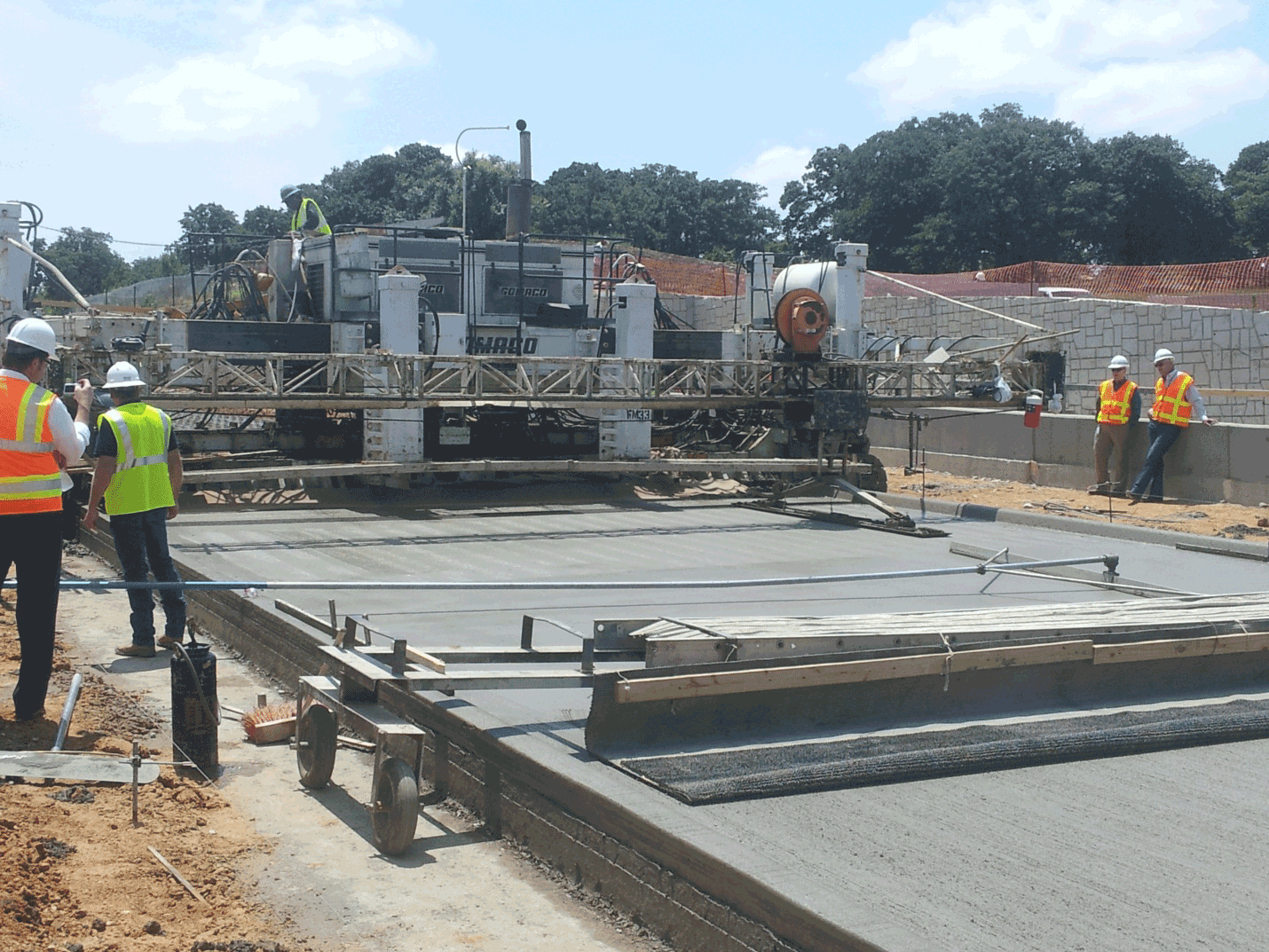Concrete research at OSU makes breakthrough
Wednesday, May 16, 2012

The mixture design developed by an OSU team headed by Tyler Ley, assistant professor
of civil engineering, reduced the carbon footprint of the concrete by 25 percent and
reduced cost by 10 percent, while providing a pavement with a longer life-expectancy
and satisfactory strength.
This work was sponsored by the Federal Highway Administration with its Highways for
Life program. Oklahoma State University was assisted by additional research teams
at Texas A&M and Texas Tech, along with Texas DOT and Ed Bell, the general contractors,
to showcase improvements in road construction and design.
Concrete is composed of rock, sand, cement, water, and other admixtures. This mixture
is designed to use rocks of different sizes and shapes so that they pack tightly and
dominate the volume of the mixture. The more rock used in a mixture, the less sand
and cement is needed to fill the remaining volume. Cement is the most expensive ingredient
in concrete, causes the most complications in the long-term performance, and is the
biggest contributor to the carbon footprint. Therefore it is desirable to minimize
the ratio of cement to the other ingredients.
The OSU mixture is called Optimized Graded Concrete. The concepts have been published
for almost 100 years. However, the research team at OSU developed several new design
techniques that have yielded even greater improvements in cement savings and produced
practical concrete mixtures.
With a greater focus on cost, long term performance, and sustainability the use of
optimized graded concrete has become more prevalent. Oklahoma has shown strong interest
to adopt optimized graded concrete.
Ley’s research group has received grants from the Oklahoma Department of Transportation,
the Oklahoma Transportation Center, and the Concrete Pavement Center totaling over
$250,000 to study optimized graded concrete further.
The team hopes to implement this work in concrete pavements in 2013 and concrete
bridges in 2014 for the state of Oklahoma.
